Abstract
1. The purpose of the present study was to analyse the incidence and type of coordination between breathing rhythm and leg movements during running and to assess the effect of co-ordination on the running efficiency, as well as to compare the results with those found during cycling. 2. The experiments were carried out on thirty-four untrained volunteers exercising at two work loads (60 and 80% of subject's physical work capacity 170) on a treadmill. In addition nineteen of the subjects exercised at the same two work loads on a bicycle ergometer. The subjects were running at both work loads in three different modes in randomized order: with normal arm movements, without arm movements and with breathing paced by an acoustic signal which was triggered by the leg movement. 3. Respiratory variables, oxygen uptake and leg movements were continuously recorded and evaluated on-line. The degree of co-ordination was expressed as a percentage of inspirations and/or expirations starting in the same phase of the step or pedalling cycle. 4. The average degree of co-ordination was higher during running (up to 40%) than during cycling (about 20%) during both work loads. The difference in the degree of co-ordination between running and cycling is probably not due to the lack of arm movements during cycling since the degree of co-ordination during running with and without arm movements was the same. 5. The degree of co-ordination during running increased slightly but not significantly with increasing work load and could be increased significantly by paced breathing. 6. The co-ordination between breathing and running rhythms occurred in three different patterns: (a) breathing was co-ordinated all the time with the same phase of step, (b) co-ordination switched suddenly from one phase of step to another and (c) co-ordination ensued alternatively once on the right and once on the left leg movement. During cycling the pattern described in (a) occurred almost exclusively. 7. During running with a high degree of co-ordination, oxygen uptake for a given work load was slightly but significantly lower than during running with weak co-ordination.
Full text
PDF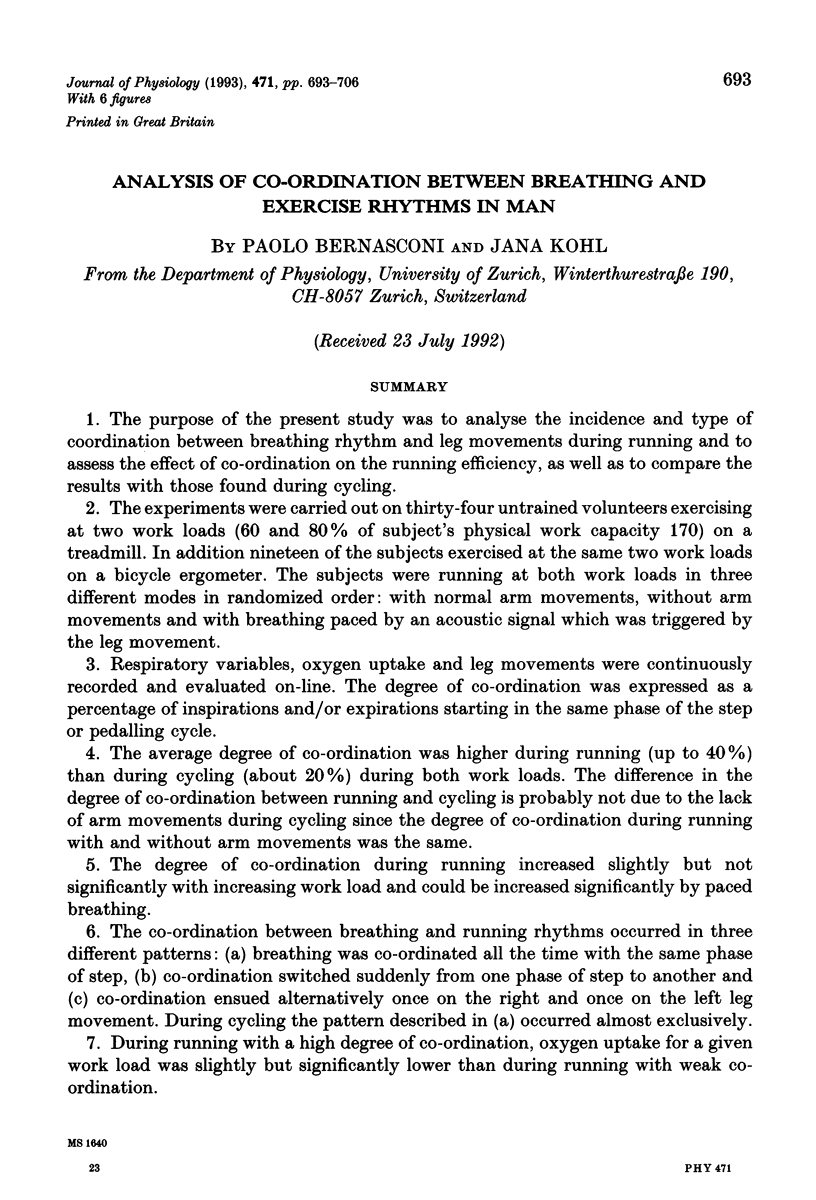
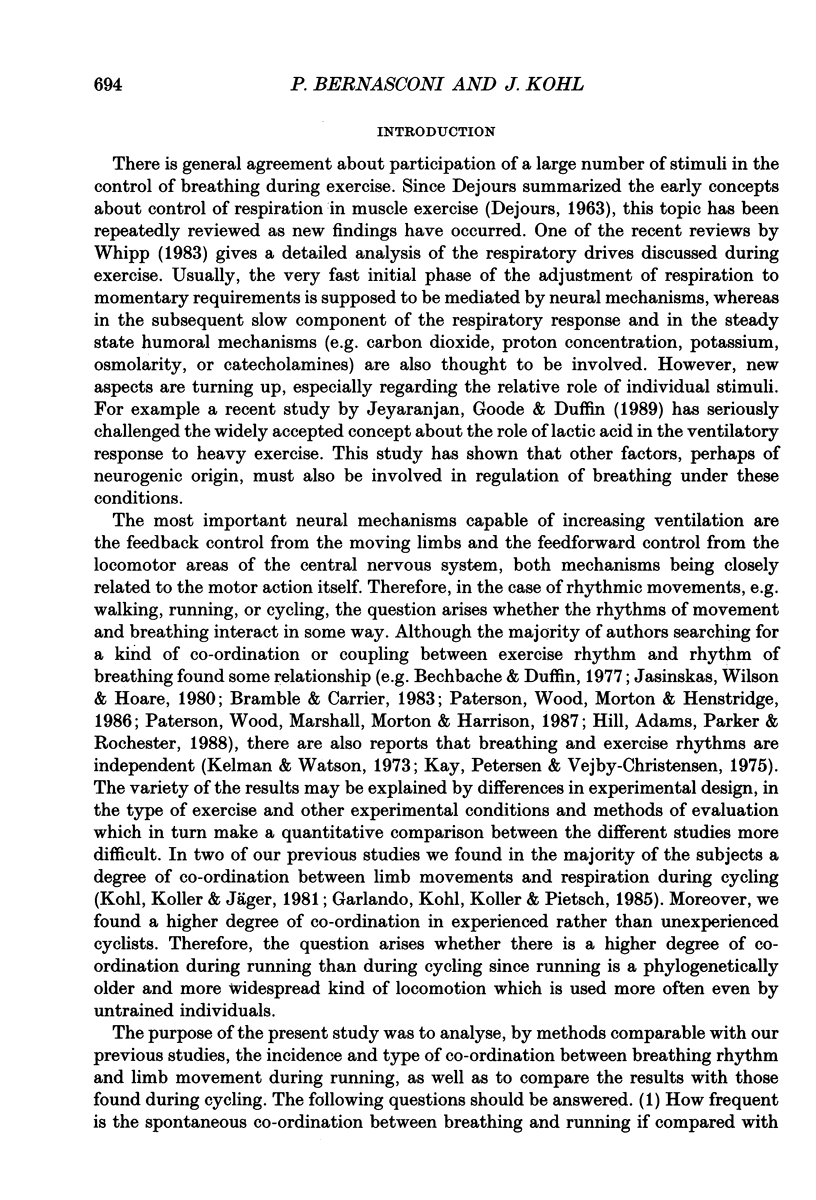
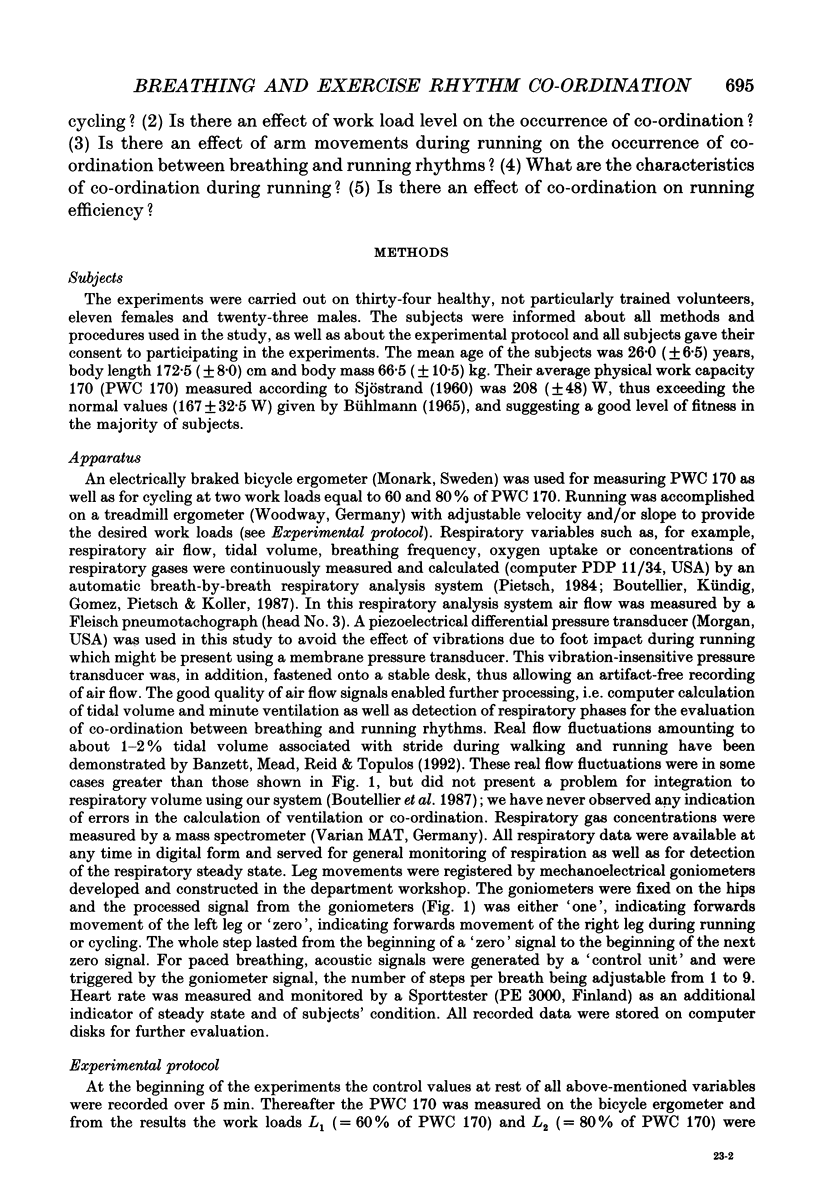
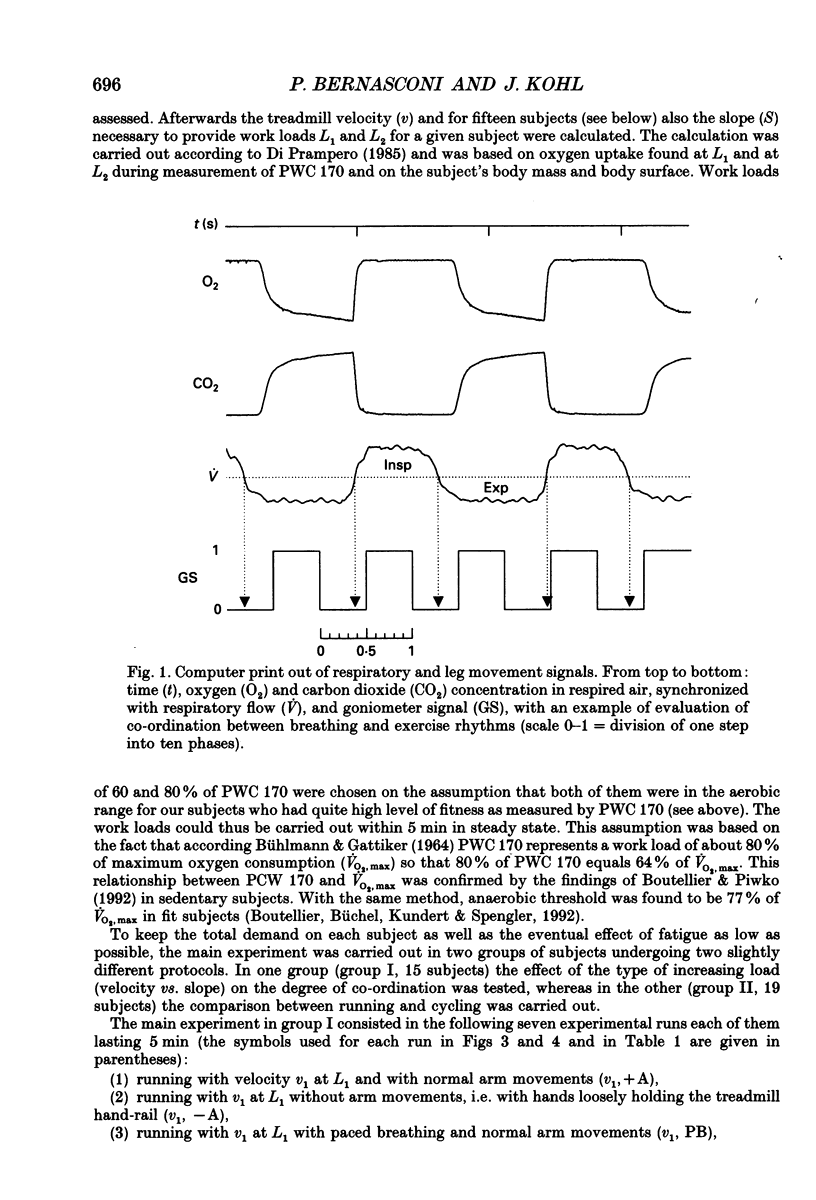
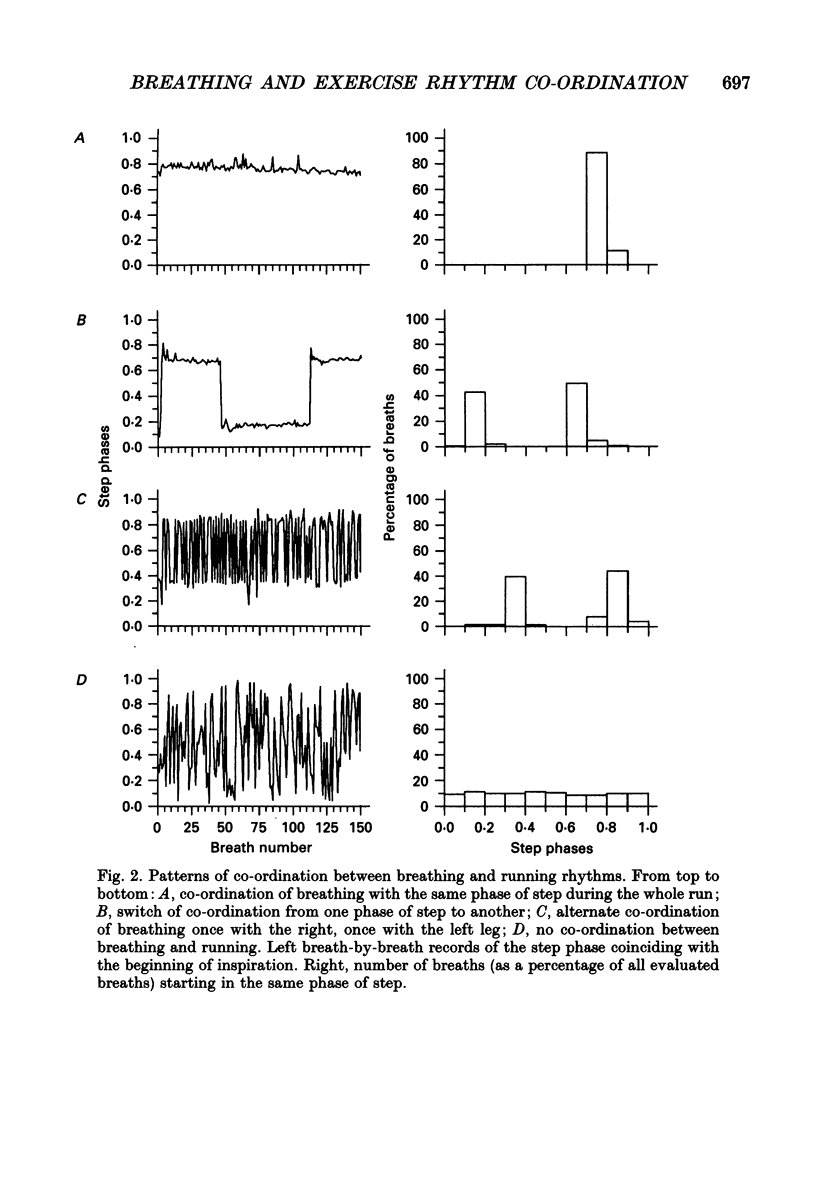
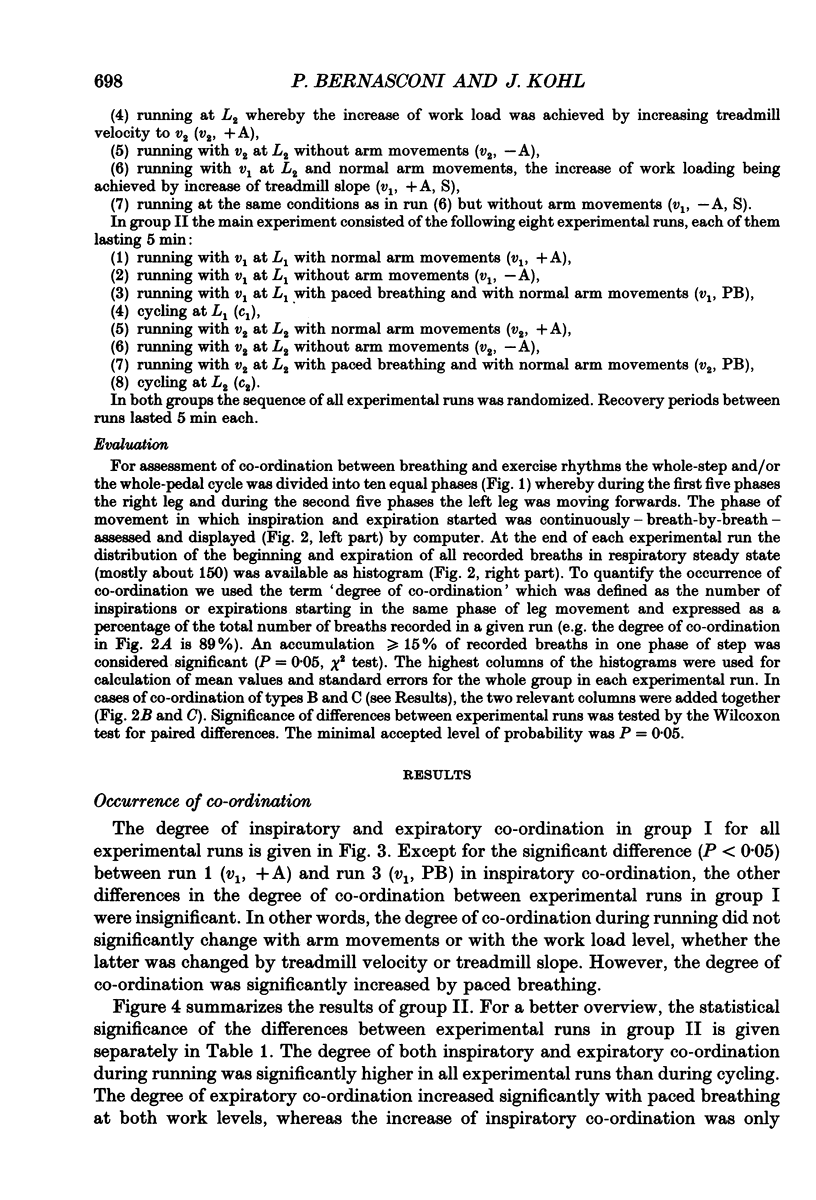
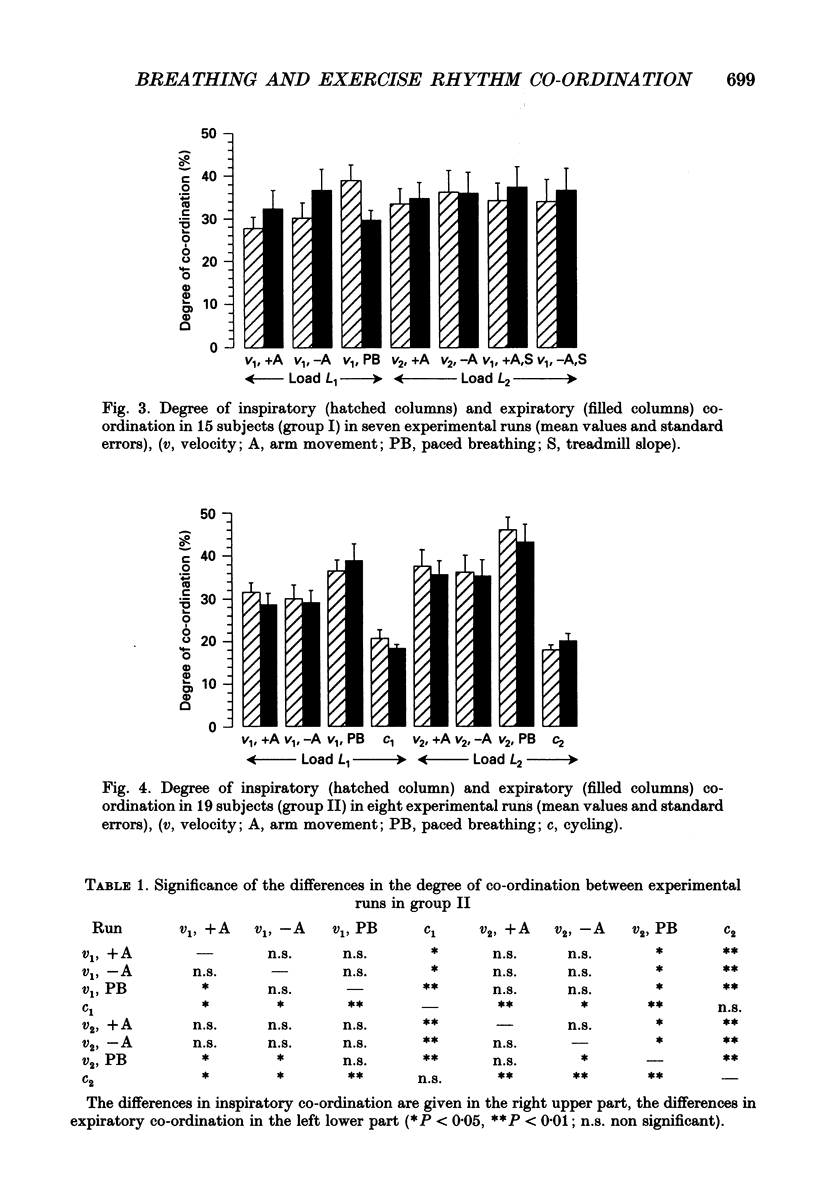
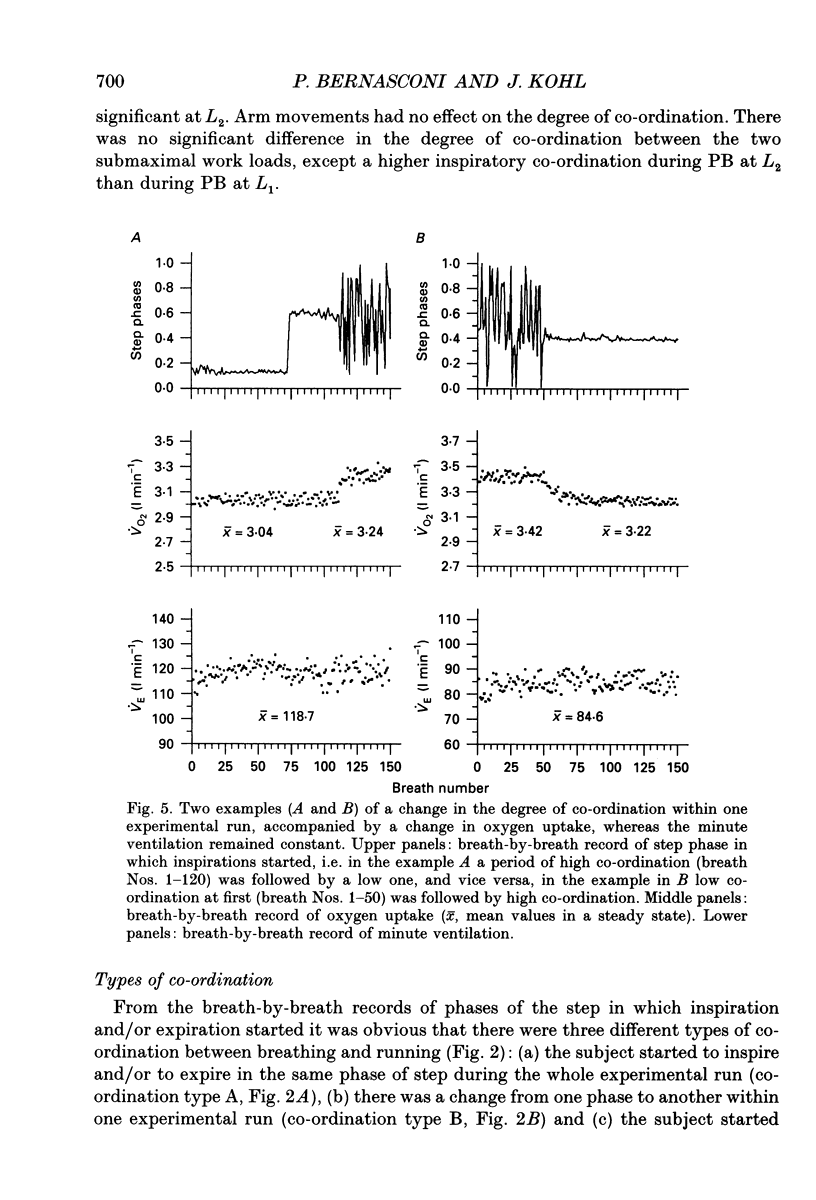
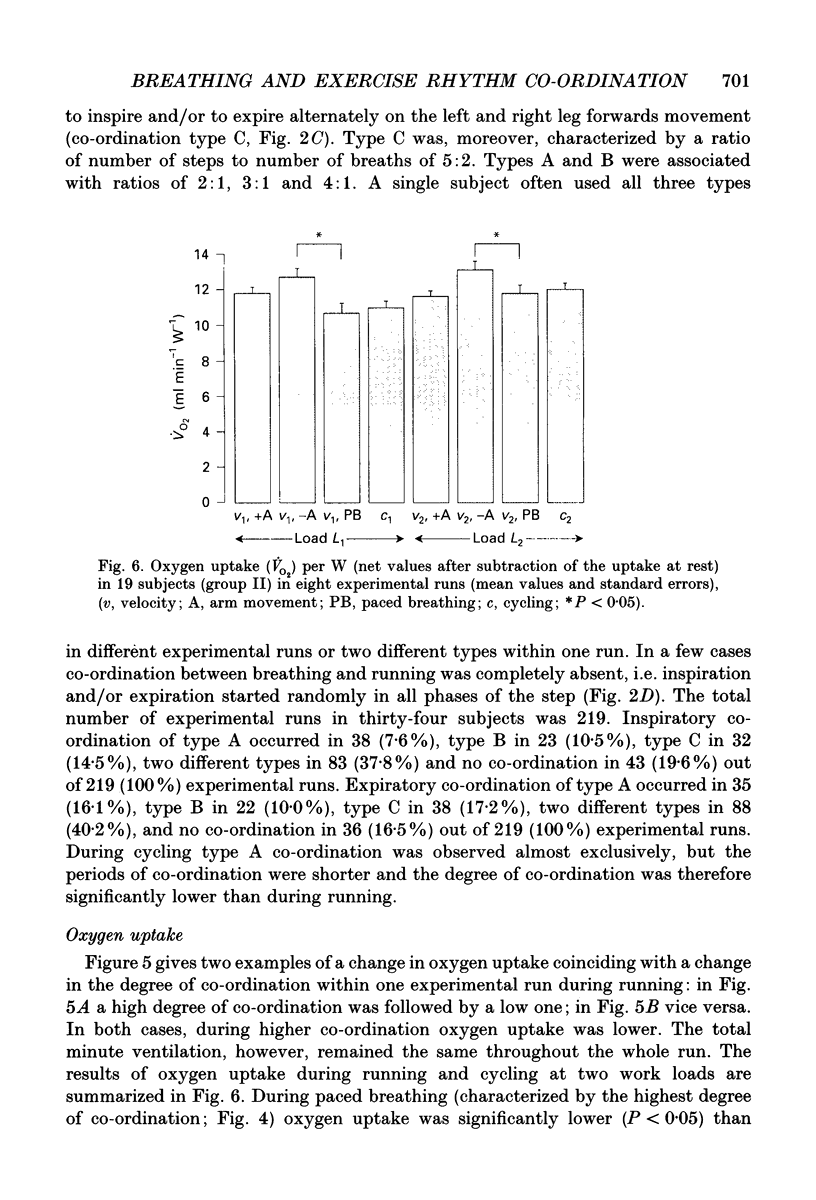

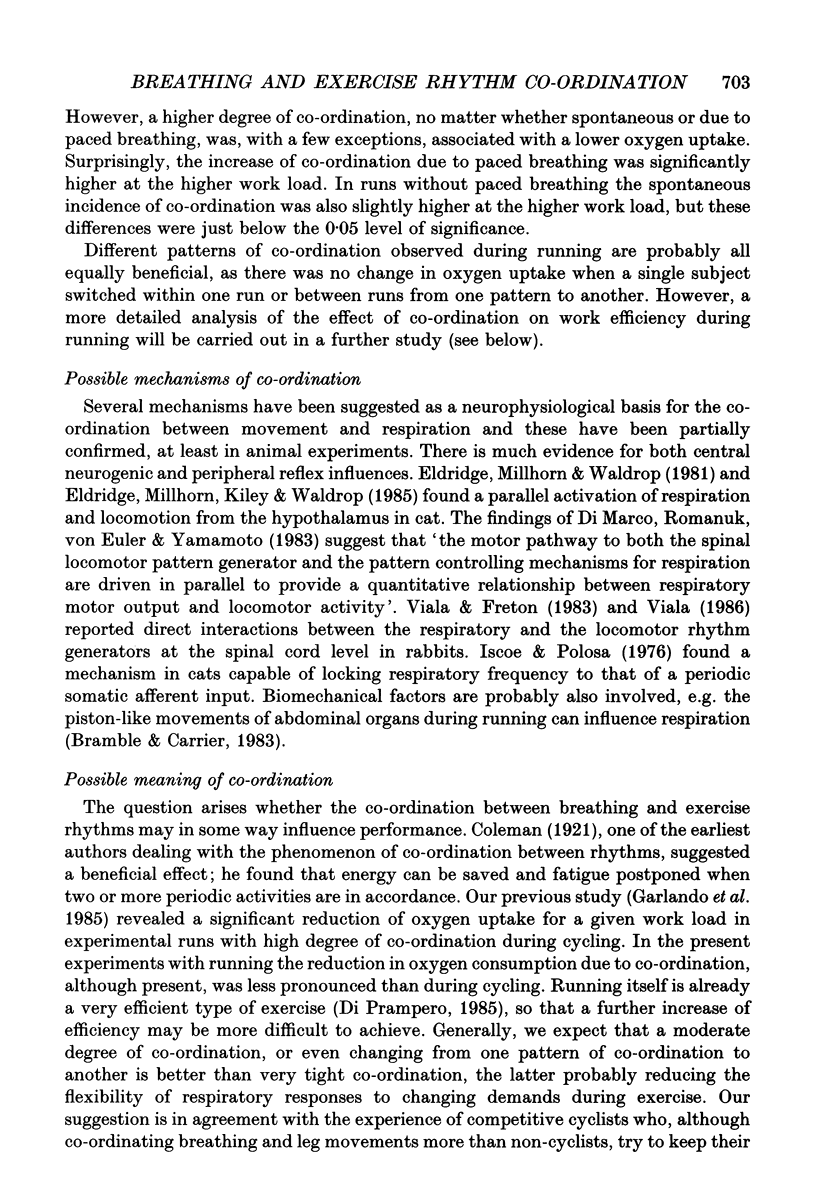
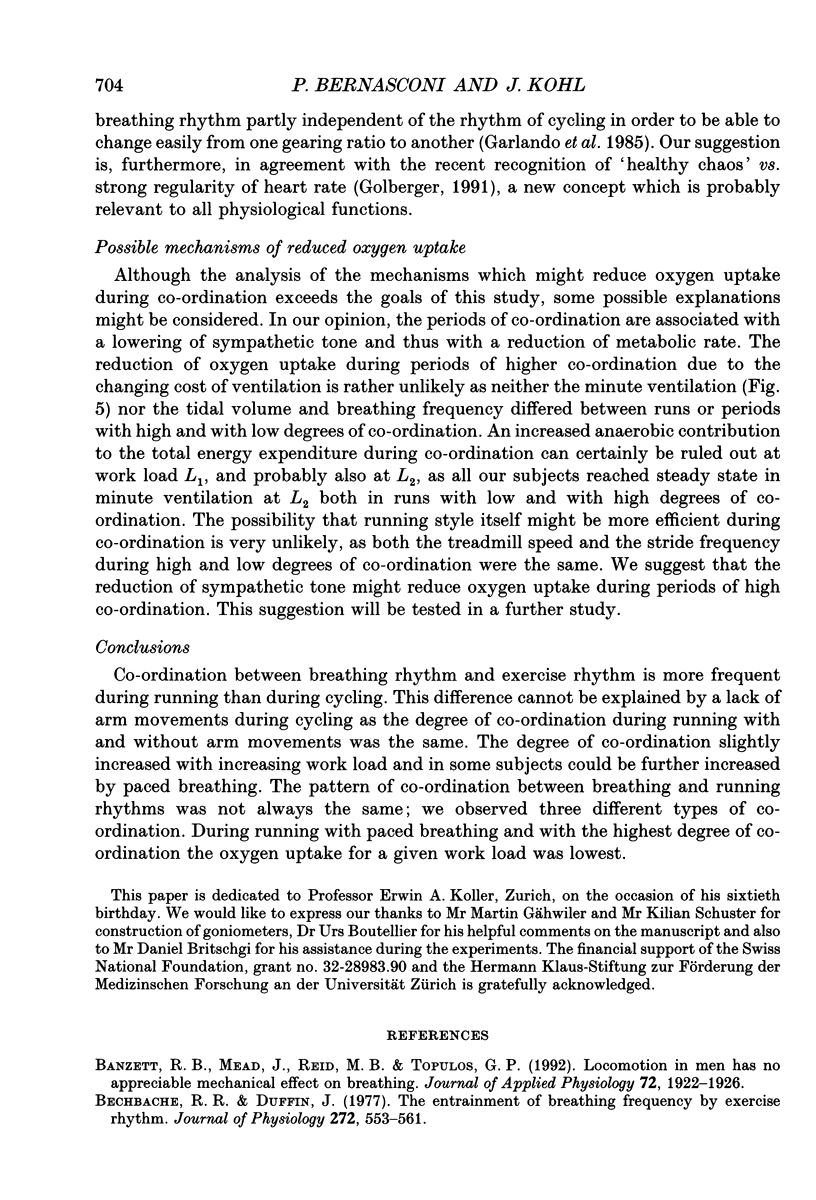
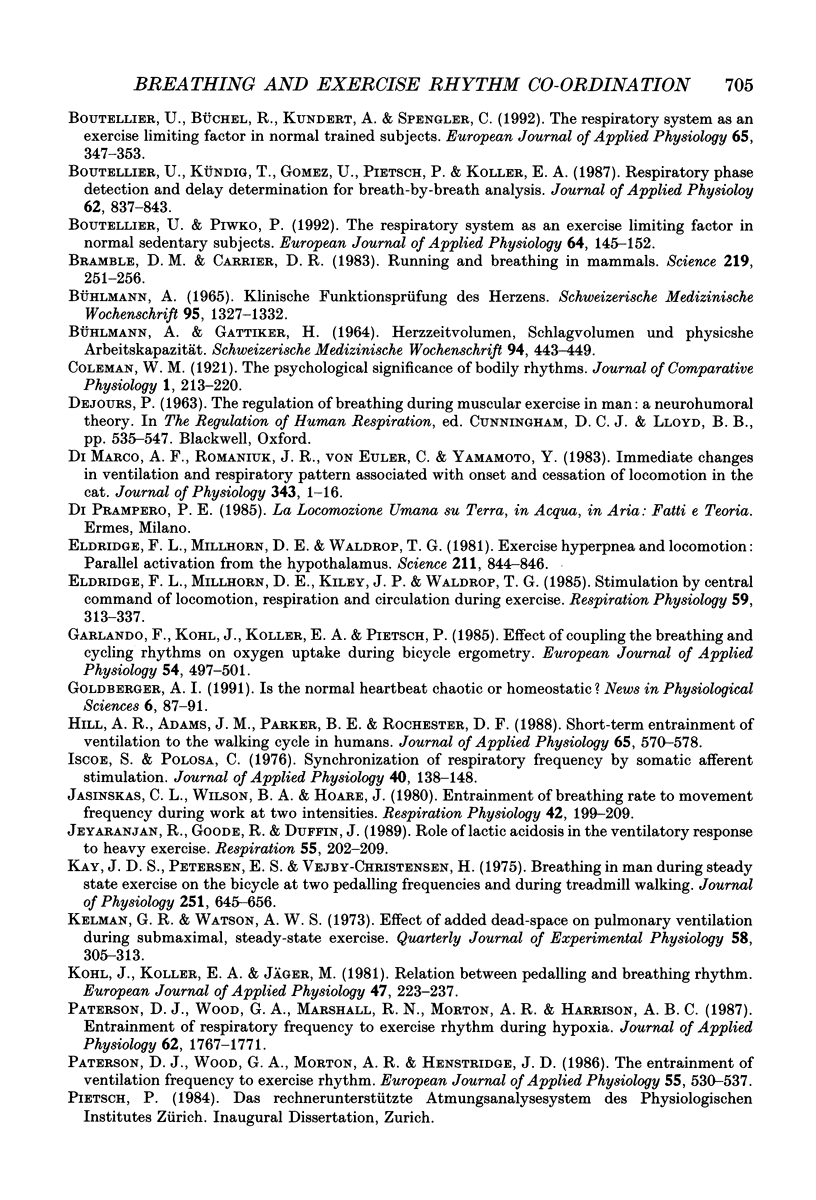
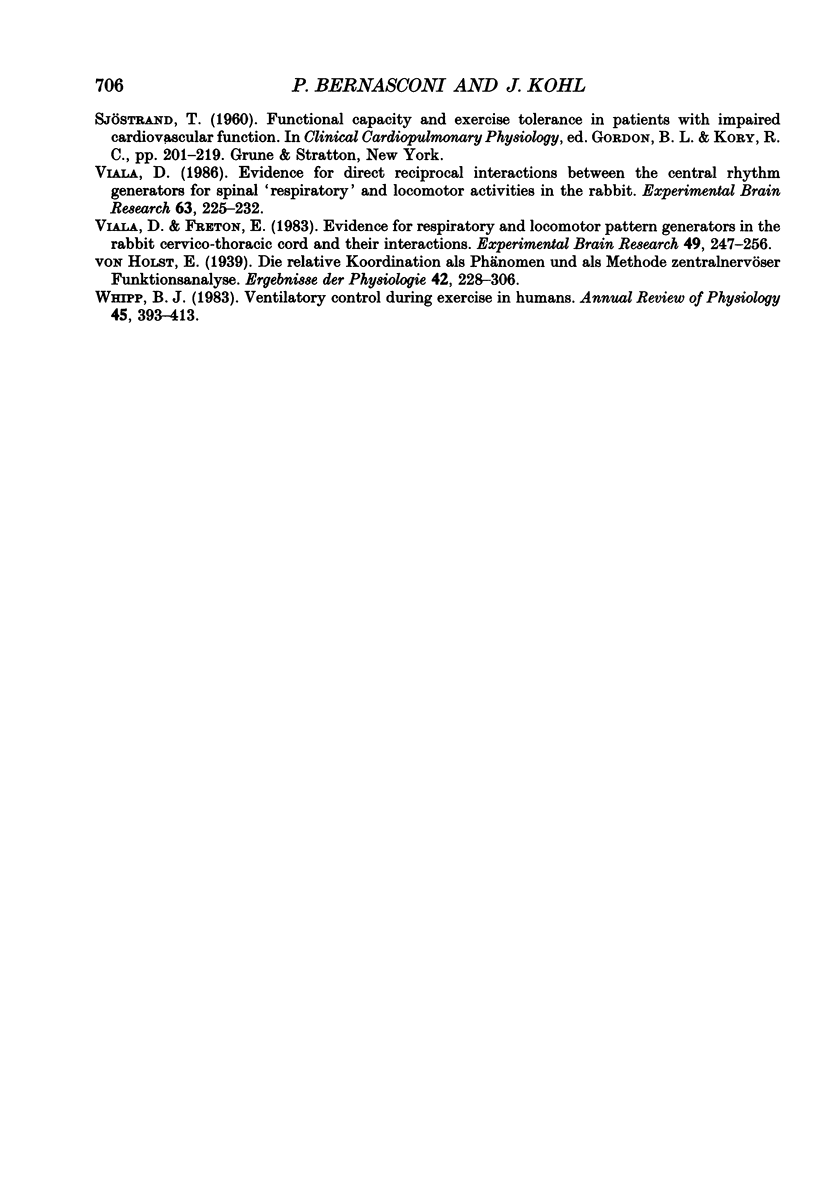
Selected References
These references are in PubMed. This may not be the complete list of references from this article.
- BUEHLMANN A., GATTIKER H. HERZZEITVOLUMEN, SCHLAGVOLUMEN UND PHYSISCHE ARBEITSKAPAZITAET. Schweiz Med Wochenschr. 1964 Mar 28;94:443–449. [PubMed] [Google Scholar]
- Banzett R. B., Mead J., Reid M. B., Topulos G. P. Locomotion in men has no appreciable mechanical effect on breathing. J Appl Physiol (1985) 1992 May;72(5):1922–1926. doi: 10.1152/jappl.1992.72.5.1922. [DOI] [PubMed] [Google Scholar]
- Bechbache R. R., Duffin J. The entrainment of breathing frequency by exercise rhythm. J Physiol. 1977 Nov;272(3):553–561. doi: 10.1113/jphysiol.1977.sp012059. [DOI] [PMC free article] [PubMed] [Google Scholar]
- Boutellier U., Büchel R., Kundert A., Spengler C. The respiratory system as an exercise limiting factor in normal trained subjects. Eur J Appl Physiol Occup Physiol. 1992;65(4):347–353. doi: 10.1007/BF00868139. [DOI] [PubMed] [Google Scholar]
- Boutellier U., Kündig T., Gomez U., Pietsch P., Koller E. A. Respiratory phase detection and delay determination for breath-by-breath analysis. J Appl Physiol (1985) 1987 Feb;62(2):837–843. doi: 10.1152/jappl.1987.62.2.837. [DOI] [PubMed] [Google Scholar]
- Boutellier U., Piwko P. The respiratory system as an exercise limiting factor in normal sedentary subjects. Eur J Appl Physiol Occup Physiol. 1992;64(2):145–152. doi: 10.1007/BF00717952. [DOI] [PubMed] [Google Scholar]
- Bramble D. M., Carrier D. R. Running and breathing in mammals. Science. 1983 Jan 21;219(4582):251–256. doi: 10.1126/science.6849136. [DOI] [PubMed] [Google Scholar]
- Bühlmann A. Klinische Funktionsprüfung des Herzens. Schweiz Med Wochenschr. 1965 Oct 2;95(40):1327–1332. [PubMed] [Google Scholar]
- DiMarco A. F., Romaniuk J. R., Von Euler C., Yamamoto Y. Immediate changes in ventilation and respiratory pattern associated with onset and cessation of locomotion in the cat. J Physiol. 1983 Oct;343:1–16. doi: 10.1113/jphysiol.1983.sp014878. [DOI] [PMC free article] [PubMed] [Google Scholar]
- Eldridge F. L., Millhorn D. E., Kiley J. P., Waldrop T. G. Stimulation by central command of locomotion, respiration and circulation during exercise. Respir Physiol. 1985 Mar;59(3):313–337. doi: 10.1016/0034-5687(85)90136-7. [DOI] [PubMed] [Google Scholar]
- Eldridge F. L., Millhorn D. E., Waldrop T. G. Exercise hyperpnea and locomotion: parallel activation from the hypothalamus. Science. 1981 Feb 20;211(4484):844–846. doi: 10.1126/science.7466362. [DOI] [PubMed] [Google Scholar]
- Garlando F., Kohl J., Koller E. A., Pietsch P. Effect of coupling the breathing- and cycling rhythms on oxygen uptake during bicycle ergometry. Eur J Appl Physiol Occup Physiol. 1985;54(5):497–501. doi: 10.1007/BF00422959. [DOI] [PubMed] [Google Scholar]
- Goldberger A. L. Is the normal heartbeat chaotic or homeostatic? News Physiol Sci. 1991 Apr;6:87–91. doi: 10.1152/physiologyonline.1991.6.2.87. [DOI] [PubMed] [Google Scholar]
- Hill A. R., Adams J. M., Parker B. E., Rochester D. F. Short-term entrainment of ventilation to the walking cycle in humans. J Appl Physiol (1985) 1988 Aug;65(2):570–578. doi: 10.1152/jappl.1988.65.2.570. [DOI] [PubMed] [Google Scholar]
- Iscoe S., Polosa C. Synchronization of respiratory frequency by somatic afferent stimulation. J Appl Physiol. 1976 Feb;40(2):138–148. doi: 10.1152/jappl.1976.40.2.138. [DOI] [PubMed] [Google Scholar]
- Jasinskas C. L., Wilson B. A., Hoare J. Entrainment of breathing rate to movement frequency during work at two intensities. Respir Physiol. 1980 Dec;42(3):199–209. doi: 10.1016/0034-5687(80)90115-2. [DOI] [PubMed] [Google Scholar]
- Jeyaranjan R., Goode R., Duffin J. Role of lactic acidosis in the ventilatory response to heavy exercise. Respiration. 1989;55(4):202–209. doi: 10.1159/000195735. [DOI] [PubMed] [Google Scholar]
- Kay J. D., Petersen E. S., Vejby-Christensen H. Breathing in man during steady-state exercise on the bicycle at two pedalling frequencies, and during treadmill walking. J Physiol. 1975 Oct;251(3):645–656. doi: 10.1113/jphysiol.1975.sp011113. [DOI] [PMC free article] [PubMed] [Google Scholar]
- Kelman G. R., Watson A. W. Effect of added dead-space on pulmonary ventilation during sub-maximal, steady-state exercise. Q J Exp Physiol Cogn Med Sci. 1973 Oct;58(4):305–313. doi: 10.1113/expphysiol.1973.sp002224. [DOI] [PubMed] [Google Scholar]
- Kohl J., Koller E. A., Jäger M. Relation between pedalling- and breathing rhythm. Eur J Appl Physiol Occup Physiol. 1981;47(3):223–237. doi: 10.1007/BF00422468. [DOI] [PubMed] [Google Scholar]
- Paterson D. J., Wood G. A., Marshall R. N., Morton A. R., Harrison A. B. Entrainment of respiratory frequency to exercise rhythm during hypoxia. J Appl Physiol (1985) 1987 May;62(5):1767–1771. doi: 10.1152/jappl.1987.62.5.1767. [DOI] [PubMed] [Google Scholar]
- Paterson D. J., Wood G. A., Morton A. R., Henstridge J. D. The entrainment of ventilation frequency to exercise rhythm. Eur J Appl Physiol Occup Physiol. 1986;55(5):530–537. doi: 10.1007/BF00421649. [DOI] [PubMed] [Google Scholar]
- Viala D., Freton E. Evidence for respiratory and locomotor pattern generators in the rabbit cervico-thoracic cord and for their interactions. Exp Brain Res. 1983;49(2):247–256. doi: 10.1007/BF00238584. [DOI] [PubMed] [Google Scholar]


